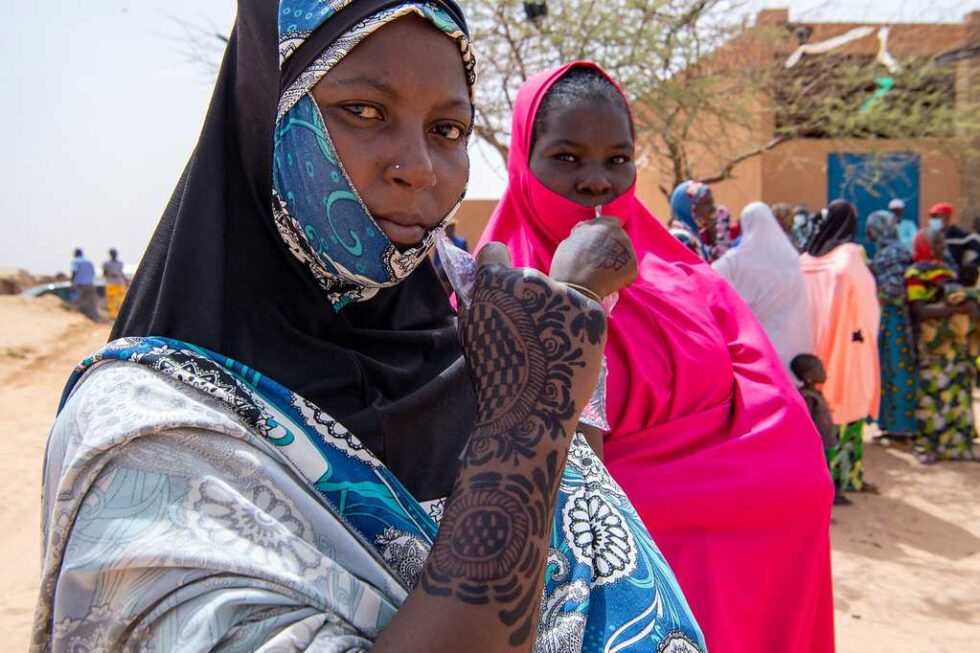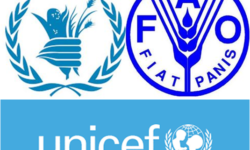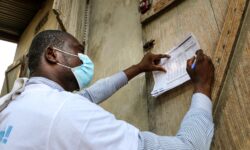
Daily Noon Briefing Highlights – 20 May 2022
Ukraine
In Ukraine, particularly in the east and the south, people continue to endure intense and escalating hostilities and the humanitarian situation deteriorates.
Over 640,000 people in eastern Ukraine don’t have access to electricity, and access to water is also becoming increasingly limited, particularly in Donetsk city. Over the last few days, shelling and hostilities in Donetska oblast have caused several deaths— including children—and destruction of houses and civilian infrastructure, including schools, according to our colleagues on the ground. Bakhmut city has been shelled again, the third day in a row, reportedly destroying apartment buildings and killing several civilians.
In Luhanska oblast, the situation is extremely tense in Sievierodonetsk, where local authorities say that more than 15,000 people are in dire need of assistance, as shelling over the last week has killed many and left the entire population without access to piped water, gas or electricity.
The situation is similar in Khersonska oblast, where more airstrikes have been reported, impacting civilians trying to flee the area. As of yesterday, the UN High Commissioner for Human Rights confirmed more than 8,000 civilian casualties since the war started in Ukraine almost three months ago.
The UN and partners continue life-saving work across the country, and have supported over 6.8 million people out of nearly 16 million who need humanitarian aid in Ukraine. This is 400,000 more people reached with assistance over last week’s reporting.
We are ready to further scale up the humanitarian assistance, but the parties to the conflict need to urgently uphold their obligations under international humanitarian law to protect civilians and enable assistance to those whose lives are at stake right now.
Syria
Emergency Relief Coordinator Martin Griffiths briefed the Security Council this morning on the humanitarian crisis in Syria. He thanked Member States for their recent pledges at the Sixth Brussels Conference and noted the need for further funding to address the scope of humanitarian needs inside Syria. He welcomed the broad support to early recovery and resilience efforts and warned of the devastating impacts under-funding will have on already vulnerable people, especially in terms of food security.
Mr. Griffiths expressed concern for the protection of civilians in frontline areas in the north-west and the north-east, including Al Hol camp where some 56,000 people are in need. He also expressed concern over the continued detention of nearly 10,000 children and their mothers. With summer fast approaching, noting that water levels in the Euphrates are already dropping to critically low-points, limiting people’s access to water.
On humanitarian access, Mr. Griffiths highlighted a fourth cross-line convoy delivering food assistance to the north-west on 16 May, and that a convoy to the north-east to provide medical supplies, is being planned for later this month.
Cross-line operations cannot under current conditions replace the size or the scope of the massive UN cross-border operation. Mr. Griffiths stressed that failure to renew the authorization in June will disrupt life-saving aid for the north-west, including for more than one million children.
Sahel
Turning to Sahel, up to 18 million people in Africa’s Sahel region will face severe food insecurity over the next three months, the highest number since 2014, according to our projections.
In the Sahel, 7.7 million children under the age 5 are expected to suffer from malnutrition. Some 1.8 million are severely malnourished. If aid operations are not scaled up, this number could reach 2.4 million by the year’s end. Driving this is a combination of violence, insecurity, deep poverty, and record-high food prices in the region.
The situation has reached alarming levels in Burkina Faso, Chad, Mali, and Niger, where people will experience emergency levels of food insecurity during the lean season between June and August.
To help people and their urgent food security and nutrition needs, OCHA has released US$30 million from the Central Emergency Response Fund for the four countries, including $6 million for Burkina Faso and $8 million each for Chad, Mali and Niger.
This injection of cash will help aid agencies on the ground scale up the emergency response right away. It is no substitute, however, for the much more substantial donor contributions we need to maintain our response and help build resilient communities.
To date, the six humanitarian appeals launched earlier this year in the Sahel for a total of $3.8 billion to provide aid throughout the region for 2022 are less than 12 per cent funded.
Ethiopia
In Northern Ethiopia, 319 trucks of humanitarian cargo – as well as one tanker of fuel – entered Tigray during the past week. That’s the highest number of trucks entering the region in a single week since June 2021. Yet, humanitarian agencies still face shortfalls of cash, fuel, and supplies.
Since aid convoys resumed at the start of April, around 15,500 metric tons of food aid have been brought into the Tigray region and are being distributed in 45 priority districts. But at least 68,000 tons more are needed to reach all those in need.
In the neighbouring Afar and Amhara regions, where needs remain extremely high, the UN and partners continue to provide assistance to people. In neighbouring Afar’s Zone 2, a recent assessment found extremely worrying levels of malnutrition among some internally displaced people. Two stabilization centers for treatment of children with severe acute malnutrition with medical complications have now been established in the zone. Over 845,000 people have received food assistance in Afar since late February. In the past week, over 100,000 people benefitted from the trucking of clean water.
In Amhara, over 10.4 million people have received food assistance since late December. The UN and partners are also working to respond to the severe drought which is affecting more than 8 million people in southern areas of the country.
Source: OCHA









